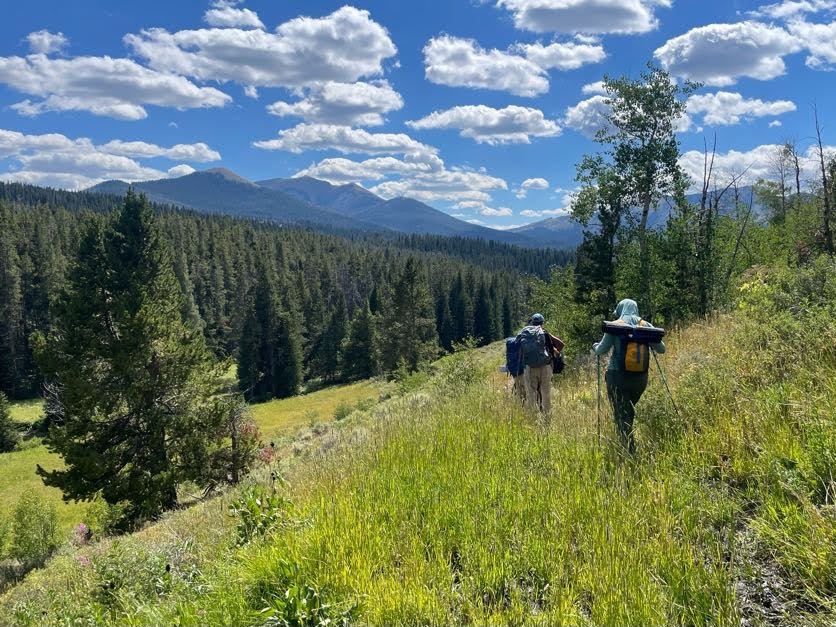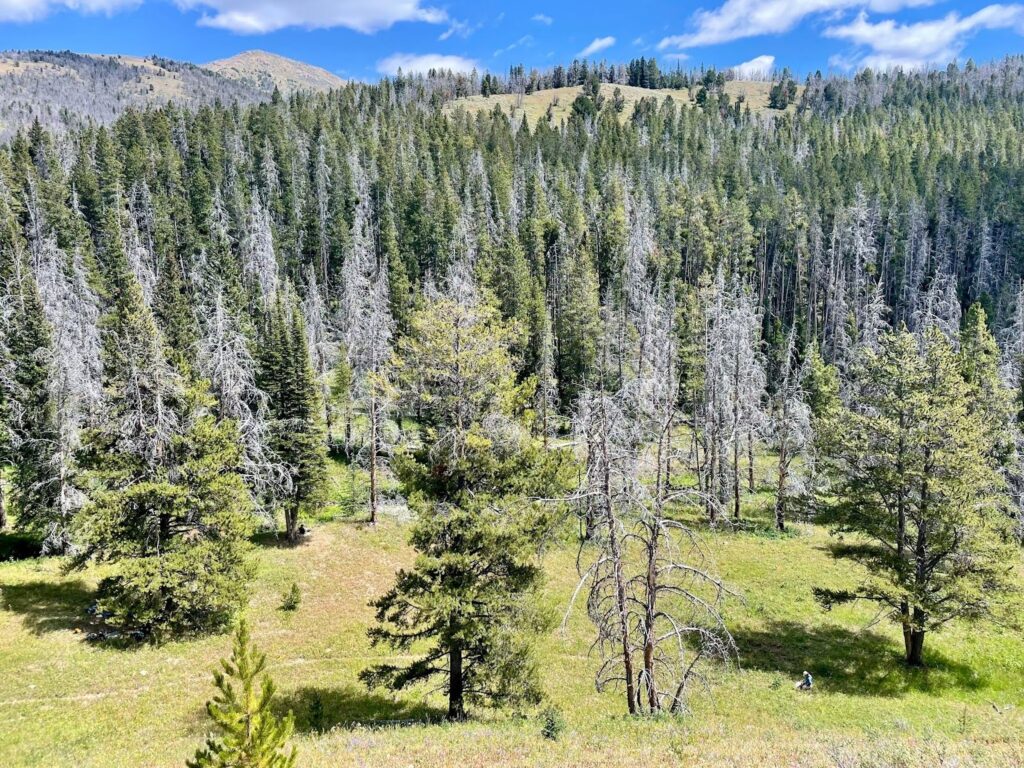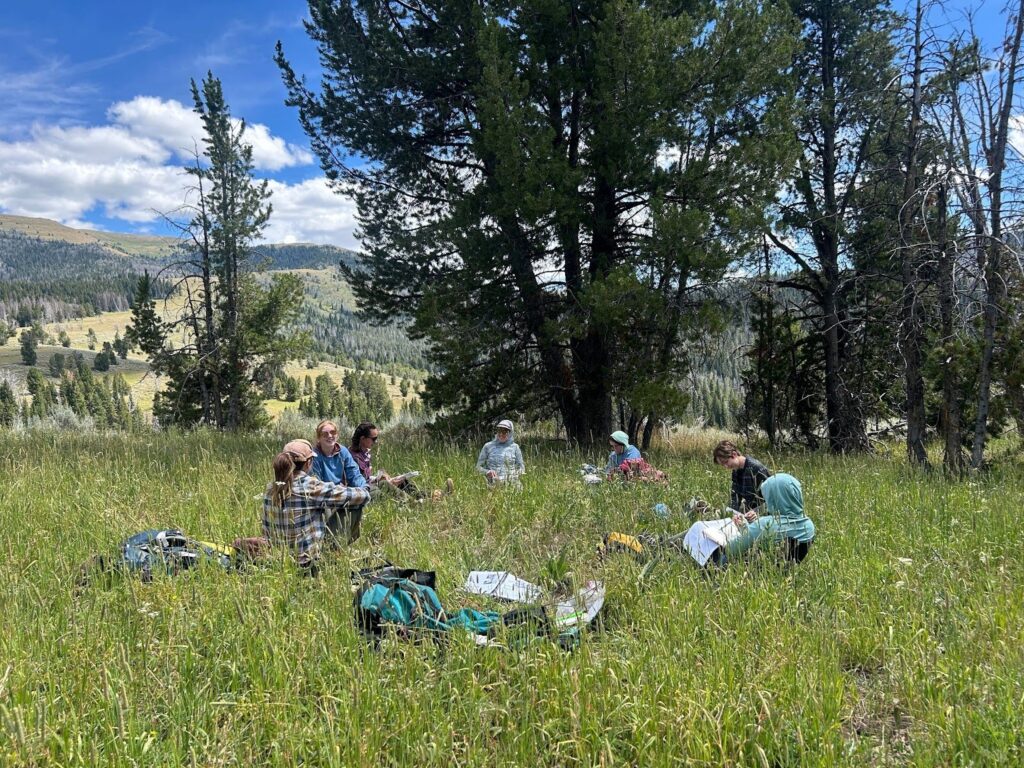Hiking into the Snowcrest mountain range, with its willow filled wetlands and rolling hills that soar up into towering mountains was a beautiful experience for everyone in the Restoration Ecology section two course. This backpacking trip would prove to be the testing ground for many of us, however we persevered through the support of our peers and learned to appreciate the satisfaction of aching legs after a hard day’s hike. We most definitely learned the value of a light pack. While the specific landscape may have been unfamiliar at first, as we came to know its inhabitants we learned to ask: “Who are you?” and “What do you like?” We asked this of the red-tailed hawks, the yarrow, and the snowberry. As we noticed and observed we came to care deeply about the area we inhabited and formed a relationship not just with the land but with its many inhabitants.

The most inquisitive moment for me—a period where I truly took time beyond a moment or few to look, listen, feel, taste, and ask questions to a non-human being—was during our plant study activity. We were given a couple prompts: to observe for a while first, then to write down our observations, and finally to ask and attempt to answer our questions through more observation. We did not know the colloquial or scientific names of our plant beforehand, and it did not seem to matter. Is knowing a Latin name for another being, then moving on to the next truly knowing that being? I used to think so, but after the plant study, after spending two hours drawing, inspecting in every way (yes I did taste my plant) and listening with more than my ears I came to the realization that I didn’t believe so anymore. That standing still with another being, holding another individual in my mind and gaze was infinitely more informative than any reading in a book or lecture in an indoor classroom. This is not to say that there is no value in a traditional classroom, I have learned much in ours about restoration ecology, wilderness, plants, and the history of the land we stand on; however, I have also learned from the plants and ecosystems themselves.

After learning that my plant was Yarrow’s basal leaves, which simply didn’t have enough energy to send up a flowering stalk yet, I was pleasantly surprised and a little sad that I had seen and known the name of the plant but never truly taken the time to know the plant. I never asked “Who are you?” I will surely do this practice more in the future. As we do more restoration work and then backpack through Yellowstone I am honored to have the opportunity to ask other beings about themselves and sit with them patiently as they show me the answer. Since there are many ways of knowing, I will still reference scientific and traditional knowledge about other beings; however, I’m glad to have learned a new practice of inquisitive observation and be given the time to listen to non-human voices.

I enjoyed your blog post, Fiona! May your inquisitive and observational skills continue to grow and expand, as you go forward with whatever life holds in store for you next. Best wishes!